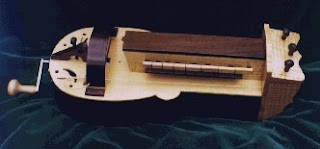Dans une
note précédente, je rapprochais inopinément le passage de la petite cuillerée de Proust d'un extrait des
Paradis Artificiels de Baudelaire.
Que ce soit une allusion délibérée de Proust, c'est dur à dire, mais ce qui est sûr c'est qu'il tenait Baudelaire en grande estime, comme l'atteste son fameux
questionnaire de 1889-90 :
"Mes poètes préférés. - Baudelaire et Alfred de Vigny."
De plus, un peu plus loin dans
Combray Baudelaire est explicitement nommé :
"[...] cette sorte de tendresse, de sérieuse douceur dans la pompe et dans la joie qui caractérisent certaines pages de Lohengrin, certaines peintures de Carpaccio, et qui font comprendre que Baudelaire ait pu appliquer au son de la
trompette l’épithète de délicieux."
On peut donc penser que dans le cerveau de Proust le mot "délicieux" est relié par un certain nombre de synapses à l'image de Baudelaire. Grâce à Wikisource c'est très facile de rechercher toutes les occurrences de ce mot dans
Combray. Il apparaît notamment dans ce passage important où le petit Marcel, mortellement angoissé d'avoir été envoyé au lit sans que sa mère, retenue par des invités, ne vinsse l'embrasser, lui a envoyé un billet par l'intermédiaire de la domestique Françoise :
"[...] puisque cette salle à manger interdite, hostile, où, il y avait un instant encore, la glace elle-même — le « granité » — et les rince-bouche me semblaient receler des plaisirs malfaisants et mortellement tristes parce que maman les goûtait loin de moi, s’ouvrait à moi et, comme un fruit devenu doux qui brise son enveloppe, allait faire jaillir, projeter jusqu’à mon cœur enivré l’attention de maman tandis qu’elle lirait mes lignes. Maintenant je n’étais plus séparé d’elle ; les barrières étaient tombées, un fil délicieux nous réunissait. Et puis, ce n’était pas tout : maman allait sans doute venir !"
(C'est moi qui souligne [
sic].) Sa ruse échoue mais il joue le tout pour le tout et descend surprendre sa mère une fois les invités partis. Elle veut le gronder mais son père est suffisamment clairvoyant pour s'apercevoir de sa détresse profonde et les invite, exceptionnellement, à passer la nuit ensemble [il y aurait beaucoup à dire sur les résonances œdipiennes de cet épisode...]. Voici comment Marcel relate la suite :
"Maman s’assit à côté de mon lit ; elle avait pris François le Champi à qui sa couverture rougeâtre et son titre incompréhensible donnaient pour moi une personnalité distincte et un attrait mystérieux. Je n’avais jamais lu encore de vrais romans. J’avais entendu dire que George Sand était le type du romancier. Cela me disposait déjà à imaginer dans François le Champi quelque chose d’indéfinissable et de délicieux. Les procédés de narration destinés à exciter la curiosité ou l’attendrissement, certaines façons de dire qui éveillent l’inquiétude et la mélancolie, et qu’un lecteur un peu instruit reconnaît pour communs à beaucoup de romans, me paraissaient simples — à moi qui considérais un livre nouveau non comme une chose ayant beaucoup de semblables, mais comme une personne unique, n’ayant de raison d’exister qu’en soi — une émanation troublante de l’essence particulière à François le Champi. Sous ces événements si journaliers, ces choses si communes, ces mots si courants, je sentais comme une intonation, une accentuation étrange."
Ce que je trouve intéressant dans ces passages c'est que l'épithète "délicieux" semble lié, chez Proust, d'une part à la figure de la mère, mais aussi, et surtout (en tout cas pour mon propos présent), à l'écriture et à la lecture : ce "fil délicieux" que sa mère "lirait" c'est le billet qu'il lui a écrit, peut-être une des premières choses qu'il ait écrites de sa propre impulsion, sans y être invité par un professeur, lui faisant soudain sentir l'importance vitale que peut avoir l'écriture. Mais la soirée est encore plus riche en révélations, car le petit Marcel va entendre de la bouche de sa mère adulée la lecture de son premier "vrai roman". Et ce qu'il trouve "délicieux", ce n'est pas, comme pour la plupart des enfants, le pouvoir captivant de l'histoire, le suspens, mais ce qui se cache derrière eux, de nature intrinsèquement littéraire, à savoir les "procédés de narration". Pas la surface du roman, mais bien sa structure interne, comme seul la verrait un écrivain. Et de fait c'est bien ce qu'il est devenu ce soir-là, notre petit Marcel, un écrivain, car il a fait lui-même l'expérience de la puissance de l'écrit comme vecteur de nos émotions les plus intenses.
La dernière phrase du second extrait, avec cette opposition "commun/étrange", fait écho à l'épisode de la petite madeleine, où une banale cuillerée provoque quelque chose "d'extraordinaire" en Marcel. Je vous le donne en mille :
"Un plaisir délicieux m'avait envahi, isolé, sans la notion de sa cause".
Cette cause qui échappe aux tentatives enfantines pour la découvrir, l'épithète "délicieux" nous la révèle cependant : c'est le plaisir littéraire ! Mais un plaisir littéraire ici à l'état bruto-brut. Je m'explique. La petite madeleine, gorgée de thé, est aussi gorgée de sens pour Marcel [oui je fais dans la métaphore facile -- un problème ? ; )]. Elle contient le souvenir du temps (et de l'espace !) où la tante de Marcel lui donnait des morceaux de madeleine trempés dans le tilleul, le dimanche matin, à Combray (c'est un roman ; c'est CE roman). Cette essence précieuse dont la madeleine remplit Proust ("ou plutôt cette essence n'était pas en moi, elle était moi.") n'est rien d'autre que la narration littéraire.
À l'appui de cette thèse, cette phrase de Baudelaire, toujours dans les
Paradis Artificiels :
"le délire poétique ressemble à celui que m’a procuré une petite cuillerée de confiture [...]"
Et je ne résiste pas à citer encore un passage d'une beauté ahurissante, qui clôt la première partie de
Combray :
"Mais, quand d’un passé ancien rien ne subsiste, après la mort des êtres, après la destruction des choses, seules, plus frêles mais plus vivaces, plus immatérielles, plus persistantes, plus fidèles, l’odeur et la saveur restent encore longtemps, comme des âmes, à se rappeler, à attendre, à espérer, sur la ruine de tout le reste, à porter sans fléchir, sur leur gouttelette presque impalpable, l’édifice immense du souvenir.
Et dès que j’eus reconnu le goût du morceau de madeleine trempé dans le tilleul que me donnait ma tante (quoique je ne susse pas encore et dusse remettre à bien plus tard de découvrir pourquoi ce souvenir me rendait si heureux), aussitôt la vieille maison grise sur la rue, où était sa chambre, [ 69 ]vint comme un décor de théâtre s’appliquer au petit pavillon donnant sur le jardin, qu’on avait construit pour mes parents sur ses derrières (ce pan tronqué que seul j’avais revu jusque-là) ; et avec la maison, la ville, la Place où on m’envoyait avant déjeuner, les rues où j’allais faire des courses depuis le matin jusqu’au soir et par tous les temps, les chemins qu’on prenait si le temps était beau. Et comme dans ce jeu où les Japonais s’amusent à tremper dans un bol de porcelaine rempli d’eau de petits morceaux de papier jusque-là indistincts qui, à peine y sont-ils plongés s’étirent, se contournent, se colorent, se différencient, deviennent des fleurs, des maisons, des personnages consistants et reconnaissables, de même maintenant toutes les fleurs de notre jardin et celles du parc de M. Swann, et les nymphéas de la Vivonne, et les bonnes gens du village et leurs petits logis et l’église et tout Combray et ses environs, tout cela qui prend forme et solidité, est sorti, ville et jardins, de ma tasse de thé."













